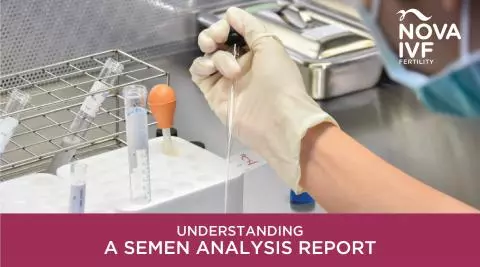Teratospermia Treatment: Improving Abnormal Sperm Shape

A natural pregnancy can be achieved by a man diagnosed with teratospermia as long as the remaining sperm factors, like the sperm count and sperm motility are normal. However, if a couple is unable to get pregnant, the man can embrace a few medical tips to better the morphology of his sperms, and improve their chances of conceiving. In case the teratospermia is diagnosed with a genetic origin, then it is difficult to look for a good treatment option.
Natural Treatment of Teratospermia
- The most crucial and obvious remedy of teratospermia is adopting healthier lifestyles. Men must make the effort to quit smoking and stop drinking excessively as these habits have a significant impact on the quality of sperms.
- Choosing a balanced diet is another key element. Consuming a good amount of fruits and vegetables, mainly food rich in antioxidants and amino-acids is essential.
- Opting for fish over other types of meat since fish is rich in omega-3 fatty acids, which is favourable for the production of quality sperms.
- Men are advised to take supplements containing vitamin E, which acts as a powerful antioxidant.
Fertility Treatment of Teratospermia
If it is a case of mild teratospermia, and the sperm count and sperm motility are normal, then Intrauterine Insemination (IUI) may be taken into consideration as a fertility treatment. IUI is a procedure during which good quality sperm cells are inserted directly into the ovum, making sure fertilisation takes place. IUI can be chosen to achieve pregnancy only if the female partner is free of any fertility issues. Basically, it is an option when teratospermia is the sole problem of fertility in the couple.
In case of moderate to severe teratospermia, or in case of a combination of varies sperm issues, IVF is the best treatment option. In Vitro Fertilisation (IVF) process includes stimulation of the ovaries to produce multiple eggs at a time, removal of eggs from the ovary, fertilisation of eggs in the laboratory, and eventually placing the embryos into the uterus.
A technique called IMSI (Intracytoplasmic Morphologically Selected Sperm Injection) uses a high magnification imaging method to see sperm shape in detail. This method helps select the healthiest sperm for fertilisation.
 Infertility Counselling
Infertility Counselling Female Infertility Treatment
Female Infertility Treatment Andrology Treatment
Andrology Treatment Fertility Enhancing Surgeries - Female
Fertility Enhancing Surgeries - Female Fertility Enhancing Surgeries - Male
Fertility Enhancing Surgeries - Male Endoscopy Treatment
Endoscopy Treatment IUI Treatment
IUI Treatment IVF Treatment
IVF Treatment ICSI Treatment
ICSI Treatment Advanced IVF Solutions
Advanced IVF Solutions Embryology
Embryology Vitrification Egg, Embryo, Sperm Freezing
Vitrification Egg, Embryo, Sperm Freezing Preimplantation Genetic Testing (PGT)
Preimplantation Genetic Testing (PGT) Donation Program Embryo / Egg / Sperm
Donation Program Embryo / Egg / Sperm Self-cycleTM IVF
Self-cycleTM IVF

 Self-cycleTM IVF
Self-cycleTM IVF










